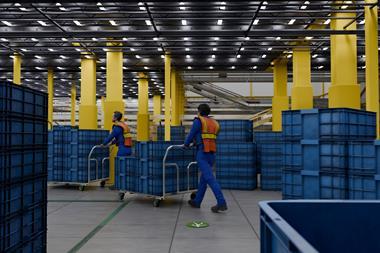An omnichannel approach is essential for retail chains, but click-and-collect will not stop the online channel’s squeeze on the high street.
Retail chains are increasingly reliant on online sales to ensure the viability of their businesses, and as the only channel offering consistent growth, this reliance can only get stronger. For so many revealing results over this year, positive like-for-like sales usually turn negative when an estimate of online sales is stripped out.
Building a truly multichannel, or as it’s becoming known, omnichannel operation, is now imperative for retail chains. Without being able to offer a seamless experience between online and physical channels, retailers will undoubtedly struggle to remain relevant to consumers who demand the ability to research, pay, or reserve products across online devices, while being able to pick up or return those goods when and where is most convenient for them.
They expect pricing to be uniform across channels, to receive tailored promotions and to access customer services on any channel, including social networks.
The problem is that omnichannel is now being trumpeted as a panacea for all retail’s woes, and, according to many retailers and industry commentators, means a bright future for the UK’s high streets.
The thinking goes that omnichannel will bring more online consumers into stores, and ensure that customers who start their purchasing journey in store will complete it with that retailer, no matter which channel they choose. In other words, online customers will be wooed by the convenience of click-and-collect, and will spend more upon collection of purchases, and in-store browsers will gravitate to their online offering.
But there are a lot of assumptions built into this rather hopeful scenario: that consumers’ first choice is to collect online purchases in store; that by having online channels, store-based retailers will win over showroomers; and that it’s feasible for all retailers to build strong multichannel offers.
For physical stores to be financially underpinned by the success of their online operations, a major chunk of online sales must depend on the existence of those stores. While click-and-collect is growing - Next said last month that 20% of its online orders were collected instore - it does not follow that these sales would not have happened without the option being available, or that customers would have used it had other delivery options been available, such as Collect+, or locker pick-up.
We don’t believe that in the long term, collection at the retailer’s stores will be the preferred way for shoppers to get their online orders.
Convenience is a major spending trigger for the modern time-pressed consumer, and while in some cases the retailer’s store will be more convenient to collect from, convenience stores have the edge in terms of location and longer opening hours.
Consumers with a satisfactory experience from a Collect+ or equivalent service are more likely to want to use it for subsequent purchases from other retailers, which will be bound to begin offering such services. As these services continue to grow, they will reduce the role of retailer instore collection. As such, the benefits of a multichannel operation over a pureplay start to evaporate, as the retailer’s store is replaced by the convenience store.
So while store based collection will thrive, it will be local neighbourhood stores, not the retailer’s high street outlets, that will benefit the most from the extra footfall.
Smaller chains will find it very difficult to develop a competitive omnichannel operation. They need to build technology that can give a view of all product stocks available across all stores, on sites that are tablet and mobile optimised that contain updated product information and visuals.
They also need to have the logistics to move stock between stores to allow for collection as soon as possible after receiving an order. This may be achievable for some small chains which rely on high priced items, where the margin on the overall transaction is high enough to accommodate the additional logistical expense, but more difficult for those selling lower priced or low margin goods.
Retail has seen massive consolidation, with the largest players accounting for a greater proportion of sales in all retail sectors . The aggregate share of the top five across sectors has increased to 47% from 41% five years ago, and the average top ten has increased to 63% from 55% in the same period, largely as a result of online shopping.
Smaller players are fighting it out for a dwindling remainder, and the omnichannel revolution the larger chains are hyping is likely to make smaller players chances of survival worse not better, resulting in even less choice on the high street.
An omnichannel approach is essential for major retail chains in terms of being able to engage with customers through the channel of their choice, but the idea that click-and-collect can halt or even reverse the damage that the online shopping revolution has done to the high street is just wishful thinking.
Patrick O’Brien, lead analyst, Verdict


























No comments yet